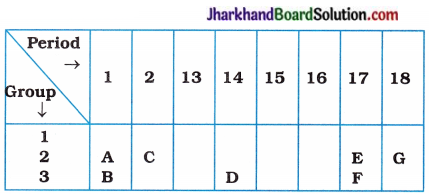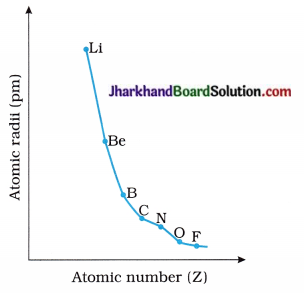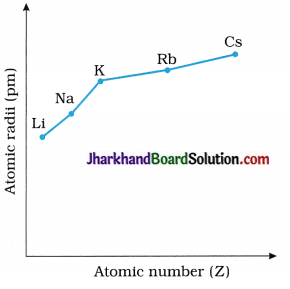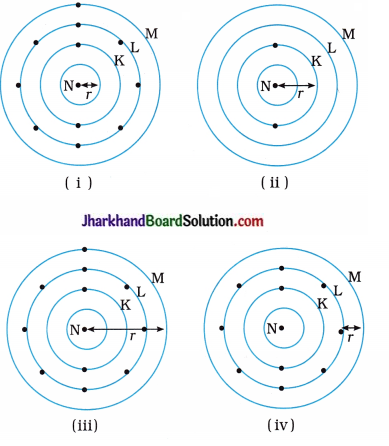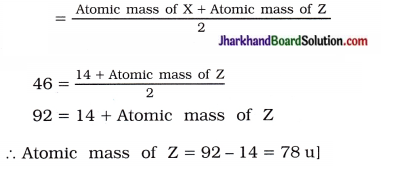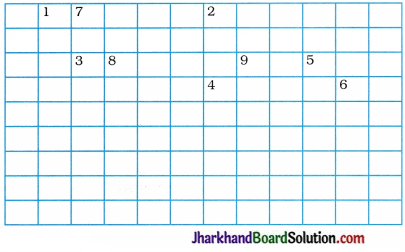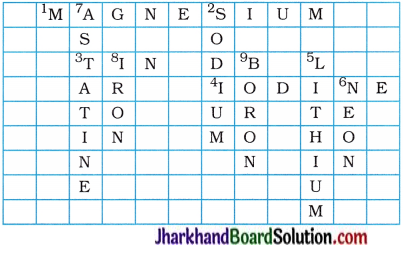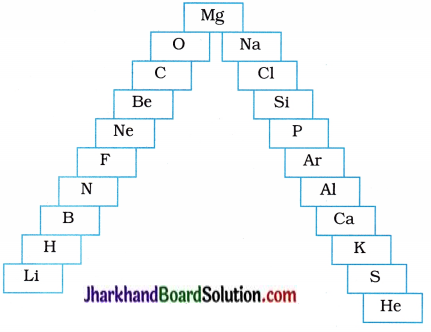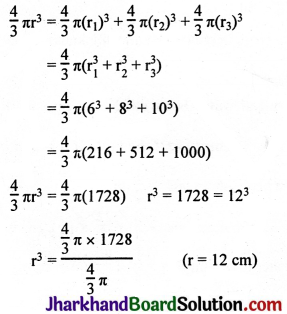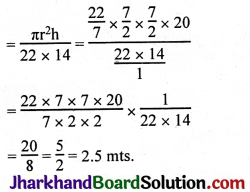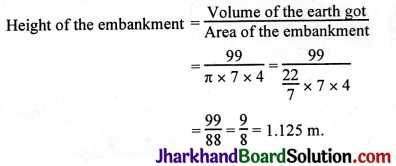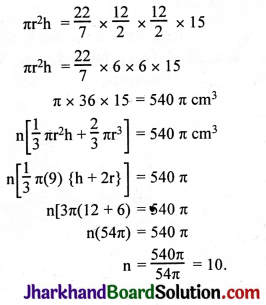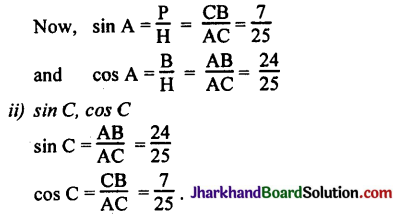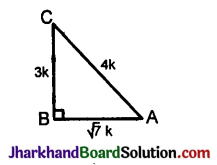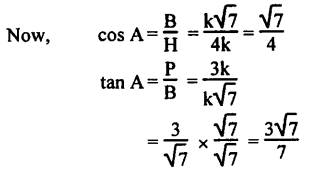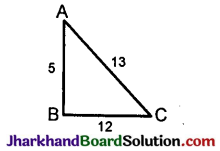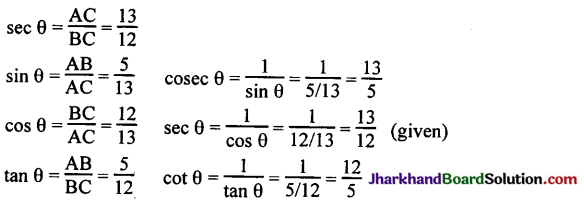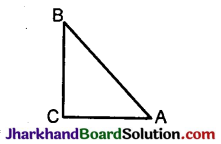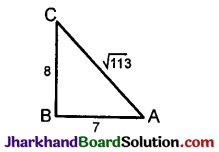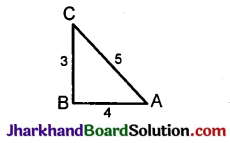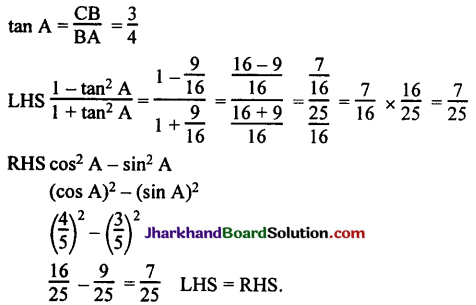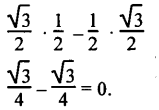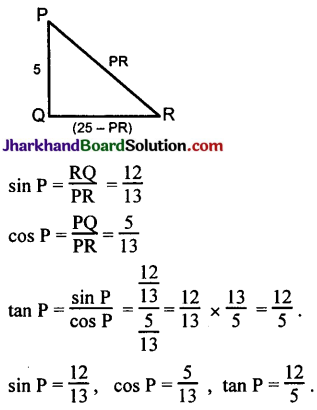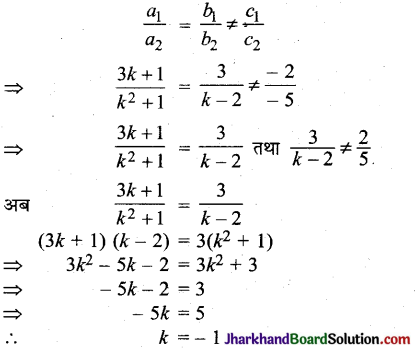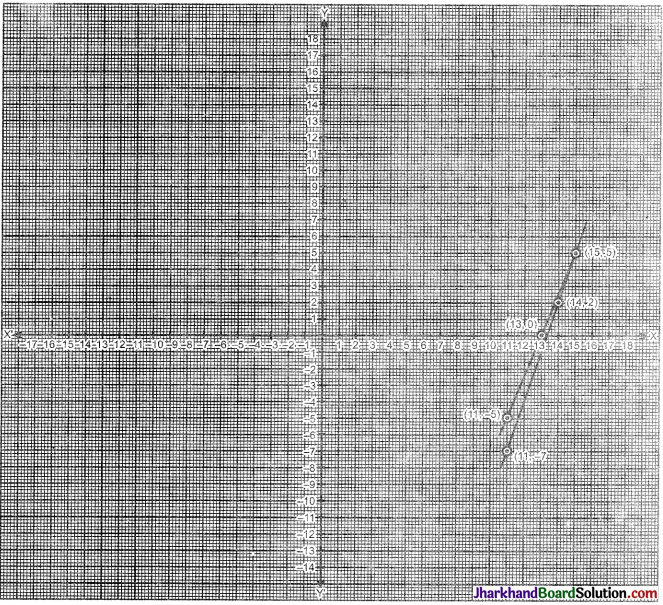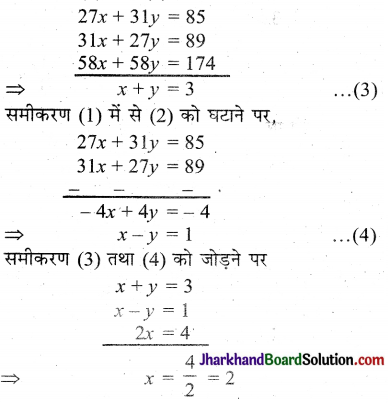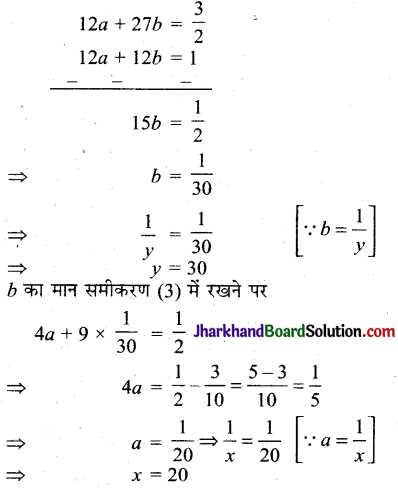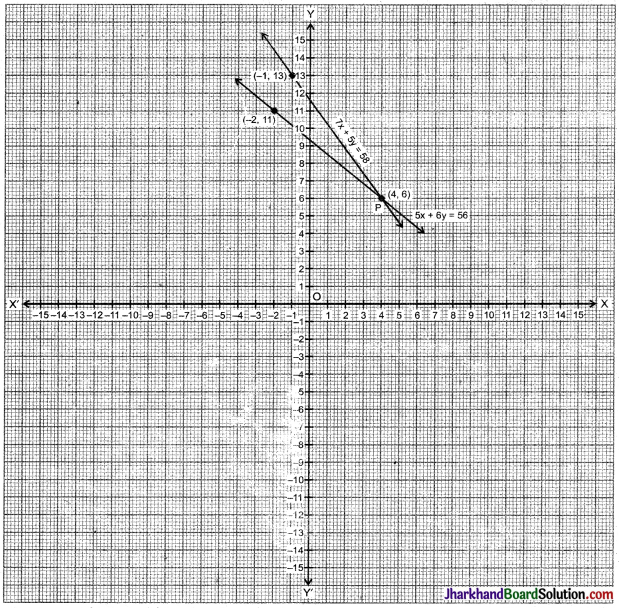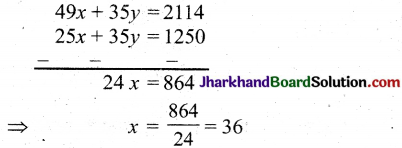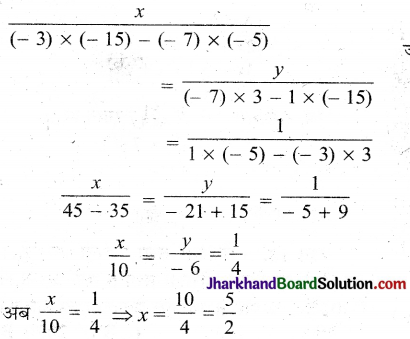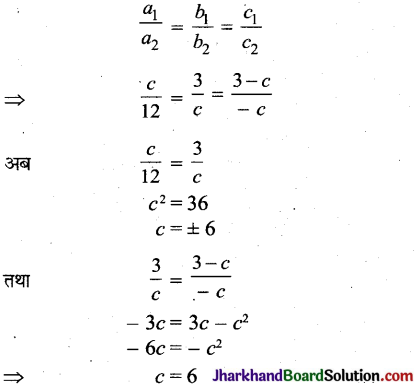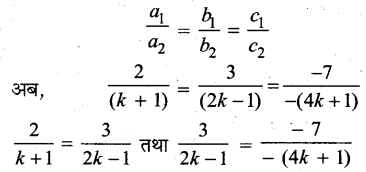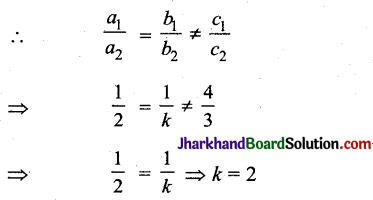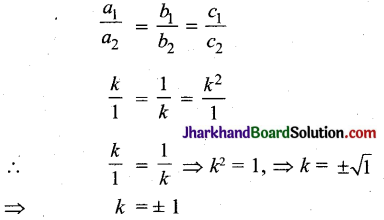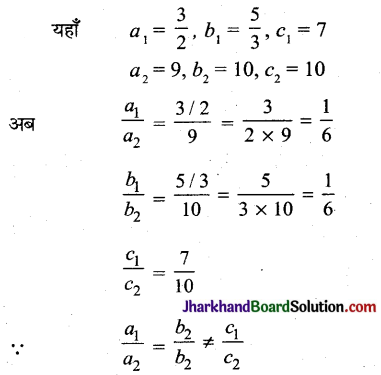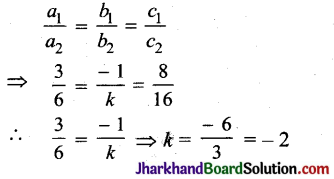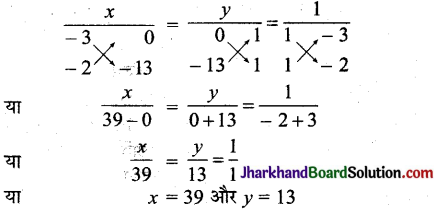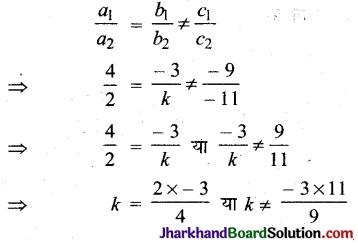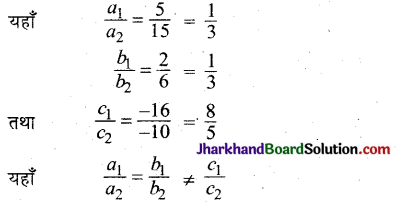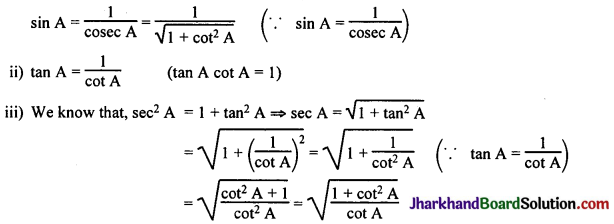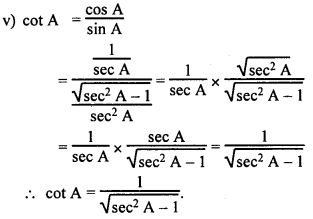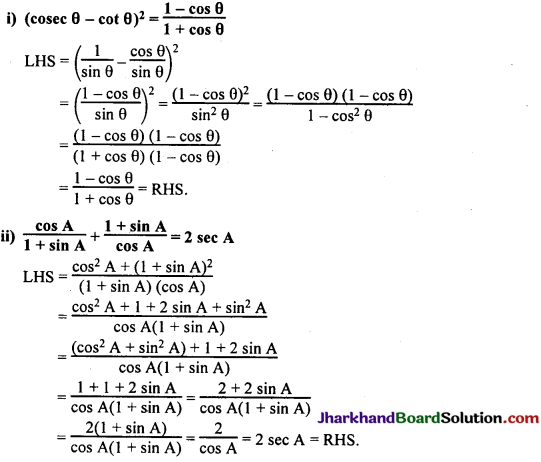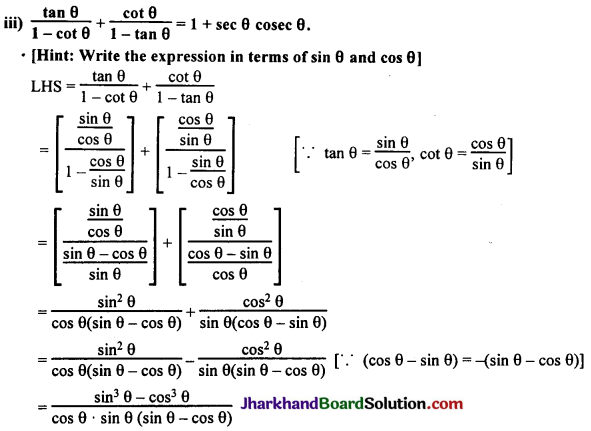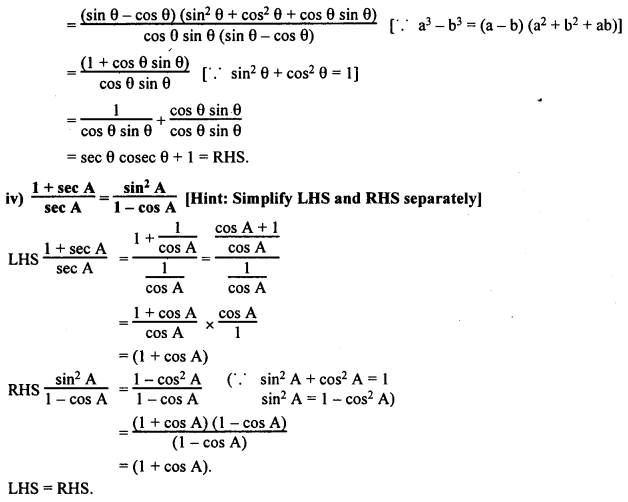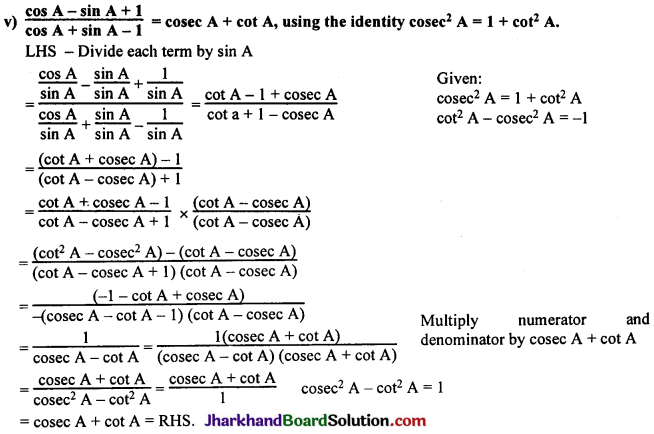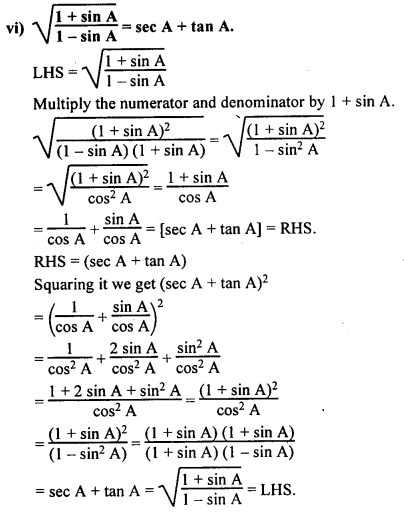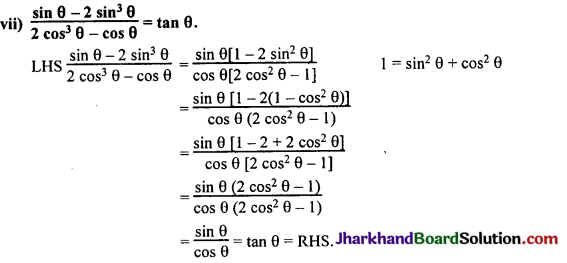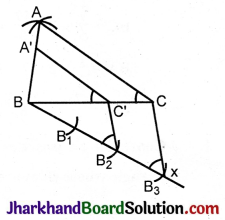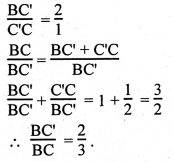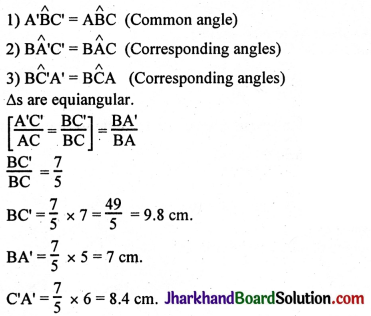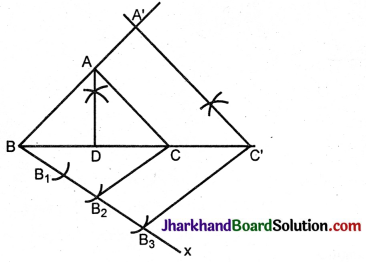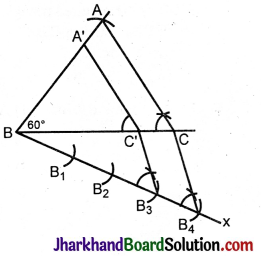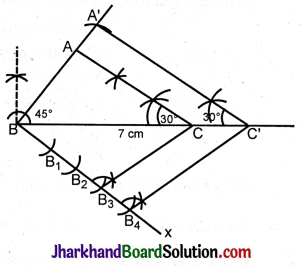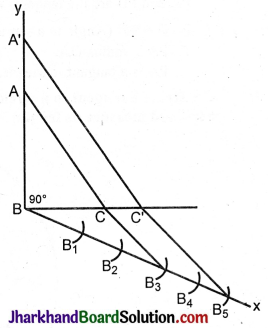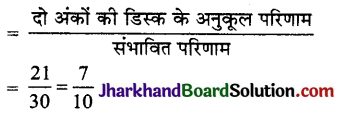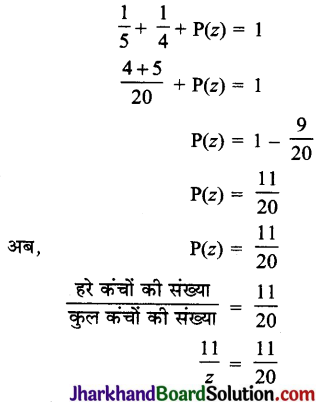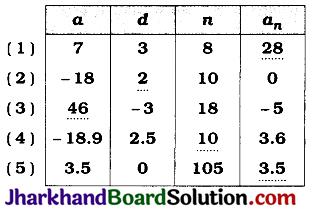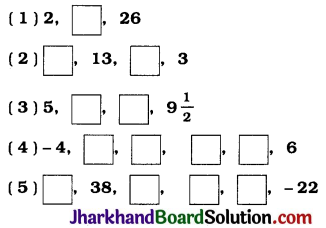Jharkhand Board JAC Class 10 Sanskrit Solutions व्याकरणम् समास: Questions and Answers, Notes Pdf.
JAC Board Class 10th Sanskrit व्याकरणम् समास:
समासशब्दस्य व्युत्पत्तिः – सम् उपसर्गपूर्वकात् असुँ (अस्) धातोः घनि प्रत्यये कृते ‘समासः’ इति शब्दो निष्पद्यते। अस्य अर्थः संक्षिप्तीकरणमिति अस्ति। (‘सम्’ उपसर्गपूर्वक ‘अस्’ धातु से ‘धजि’ प्रत्यय करने पर ‘समास’ शब्द निष्पन्न होता है। इसका अर्थ ‘संक्षिप्तीकरण’ है।)
समासस्य परिभाषा – समसनं समासः अथवा अनेकपदानाम् एकपदीभवनं समासः अर्थात् यदा अनेकपदानि मिलित्वा एकपदं जायन्ते तदा सः समासः इति कथ्यते। यथा – सीतायाः पति = सीतापतिः। अत्र सीतायाः पतिः इति पदद्वयं मिलित्वा एकपदं (सीतापतिः) जातम् अतः अयमेव समासः अस्ति। (संक्षिप्तीकरण समास है अथवा अनेक पदों का एक पद होना समास है। अर्थात् जब अनेक पद मिलकर एक पद निर्मित करते (बनाते) हैं, तब वह समास कहा जाता है। जैसे- सीतायाः पतिः (सीता का पति)= सीतापतिः। यहाँ “सीतायाः पतिः” ये दो पद मिलकर एक पद (सीतापतिः) बना। अत: यह ही समास है।)
समासे जाते अर्थे किमपि परिवर्तनं न भवति। योऽर्थः ‘सीतायाः पतिः’ इत्सस्य विग्रहवाक्यस्य अस्ति सः एव अर्थः ‘सीतापतिः’ इत्यस्य समस्तशब्दस्य अस्ति। (समास बनने पर अर्थ में कोई भी परिवर्तन नहीं होता है जो अर्थ ‘सीतायाः पतिः’ इस विग्रहवाक्य का है वह ही अर्थ ‘सीतापतिः’ इस समस्त शब्द का है।)
पूर्वोत्तरविभक्तिलोपः – सीतायाः पतिः = सीतापतिः। अस्मिन् विग्रहे सीतायाः इत्यत्र षष्ठीविभक्तिः, पतिः इत्यत्र प्रथमाविभक्तिश्च श्रूयेते। समासे कृते अनयोः द्वयोरपि विभक्तयोः लोपो भवति। तत्पश्चात् ‘सीतापति’ इति समस्तशब्दात् पुनरपि प्रथमाविभक्तिः क्रियते इत्येव सर्वत्र अवगन्तव्यम्। (सीतायाः पतिः = सीतापतिः। इस विग्रह में ‘सीतायाः’ इसमें षष्ठी विभक्ति है, ‘पतिः’ इसमें प्रथमाविभक्ति सुनाई देती है। समास करने पर इन दोनों विभक्तियों का लोप होता है। तत्पश्चात् ‘सीतापति’ इस समस्त शब्द से पुनः प्रथमा विभक्ति की जाती है जिसे सभी जगह अर्थात् सम्पूर्ण समस्त शब्द में जानना चाहिए।)
समासयुक्तः शब्दः समस्तपदं कथ्यते। यथा- ‘सीतापतिः’ इति समस्तपदम्। समस्तशब्दस्य अर्थं बोधयितुं यद् वाक्यम् उच्यते तद्वाक्यं विग्रहः इति कथ्यते। यथा सीतायाः पतिः इति वाक्यं विग्रहः अस्ति। (समासयुक्त शब्द समस्त पद कहा जाता है। जैसे ‘सीतापतिः’ यह समस्तपद है। समस्त शब्द का अर्थ जानने के लिए जो वाक्य बोला जाता है वह वाक्य ‘विग्रह’ कहा जाता है। जैसे- ‘सीतायाः पतिः’ यह वाक्य विग्रह है।)
समासस्यभेदाः – संस्कृतभाषायां समासस्य मुख्यरूपेण चत्वारः भेदाः सन्ति। समासे प्रायशः वे पदे भवतः- पूर्वपदम् उत्तरपदम् व। पदस्य अर्थः पदार्थः भवति। यस्य पदार्थस्य प्रधानता भवति तदनुरूपेण एव समासस्य संज्ञा अपि भवति। यथा प्रायेण पूर्वपदार्थप्रधानः अव्ययीभावः भवति। प्रायेण उत्तरपदार्थप्रधानः तत्पुरुषः भवति। तत्पुरुषस्य भेदः कर्मधारयः भवति। कर्मधारस्य भेद द्विगु भवति। प्रायेण अन्यपदार्थप्रधान बहुव्रीहिः भवति। प्रायेण उभयपदार्थप्रधानः द्वन्द्वः भवति। एवं समासस्य सामान्यरूपेण षड्भेदाः भवन्ति। (संस्कृतभाषा में समास के मुख्य रूप से चार भेद हैं। समास में प्राय: दो पद होते हैं पूर्वपद और उत्तरपद। पद का अर्थ पदार्थ होता है। जिस पदार्थ की प्रधानता होती है उसी के अनुसार ही समास की संज्ञा (नाम) भी होती है। जैसे प्रायः पूर्व पदार्थ प्रधान ‘अव्ययीभाव’ होता है। प्रायः उत्तर पदार्थ प्रधान ‘तत्पुरुष’ होता है। तत्पुरुष का भेद कर्मधारय होता है। कर्मधारय का भेद ‘द्विगु’ होता है। प्रायः अन्य पदार्थ प्रधान ‘बहुव्रीहि’ होता है। प्रायः उभयपदार्थ प्रधान ‘द्वन्द्व’ होता है। इस प्रकार सामान्य रूप से समास के छ: भेद होते हैं।)
![]()
1. अव्ययीभावसमासः
यदा विभक्ति, समीप-इत्यादिषु अर्थेषु वर्तमानम् अव्ययपदं सुबन्तेन सह नित्यं समस्यते तदा असौ अव्ययीभावसमासो भवति। अथवा इदमत्र अवगन्तव्यम्- (जब विभक्ति, समीप-इत्यादि अर्थों में वर्तमान अव्यय पद सुबन्त के साथ नित्य समास होता है तब यह अव्ययीभाव समास होता है। अथवा इसको इस प्रकार जानना चाहिए-)
1. अस्य समासस्य प्रथमशब्दः अव्ययं द्वितीयश्च संज्ञाशब्दो भवति। (इस समास का प्रथम शब्द अव्यय और द्वितीय संज्ञा शब्द होता है।)
2. अव्ययशब्दार्थस्य अर्थात् पूर्वपदार्थस्य प्रधानता भवति। (अव्यय शब्द के अर्थ की अर्थात् पूर्व पदार्थ की प्रधानता होती है।)
3. समासस्य पदद्वयं मिलित्वा अव्ययं भवति। (समास के दो पद मिलकर अव्यय होता है।)
4. अव्ययीभावसमासः नपुंसकलिङ्गस्य एकवचन भवति। यथा – (अव्ययीभाव समास नपुंसकलिङ्ग के एकवचन में होता है।)
ध्यातव्यम् – (अ) “यथा विभक्ति, समीप-इत्यादिषु” से तात्पर्य है –
1. विभक्ति
2. समीप
3. समृद्धि
4. समृद्धि का नाश
5. अभाव
6. नाश
7. अनुचित
8. शब्द की अभिव्यक्ति
9. पश्चात्
10. यथा
11. क्रमश:
12. एकदम
13. समानता
14. सम्पत्ति
15. सम्पूर्णता
16. अन्त तक।
इन सोलह में वर्तमान अव्यय का सुबन्त के साथ नित्य समास होता है।
![]()
(ब) नित्यसमास – प्रायः जिस समास का विग्रह न हो उसे ‘नित्यसमास’ कहते हैं। अथवा प्रायः जिसका अपने पदों से विग्रह नहीं होता अर्थात् जिन शब्दों का समास हुआ हो उन शब्दों के द्वारा जिसका विग्रह न हो, वह ‘नित्यसमास’ होता है।

अन्य उदाहरणानि –
अव्ययपदम् ‘उप’, अव्ययस्यार्थ = समीपम् (प्रथम पद में षष्ठी विभक्ति)
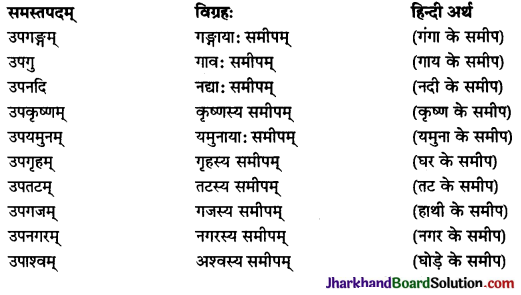
अव्ययपदम् ‘अनु’, अव्ययस्यार्थ = पश्चात्, योग्यम् (प्रथम पद में षष्ठी विभक्ति)
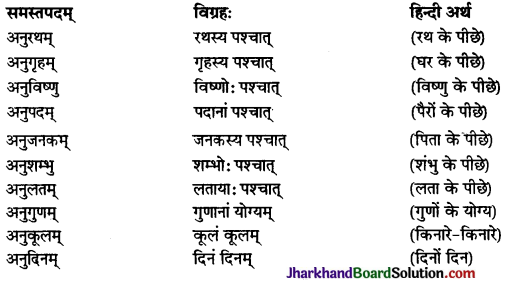
अव्ययपदम् ‘प्रति’, अव्ययस्यार्थ = वीप्सा अर्थे (उत्तर पद को दो बार, प्रथम पद में द्वितीया/सप्तमी विभक्ति)

अव्ययपदम् ‘निर्’, अव्ययस्यार्थ = अभावार्थे (प्रथम पद में षष्ठी विभक्ति)
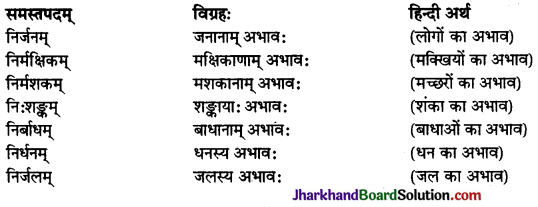
अव्ययपदम् ‘यथा’, अव्ययस्यार्थ = अनतिक्रम्य
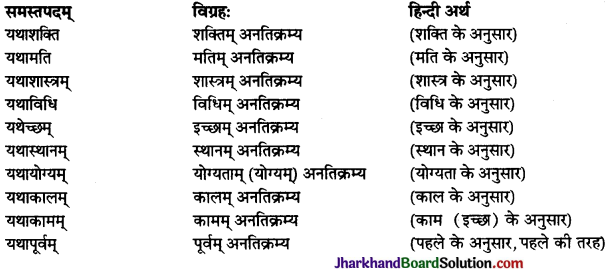
अव्ययपदम् ‘स’, अव्ययस्यार्थ = सहितम् (प्रथम पद में तृतीया विभक्ति)
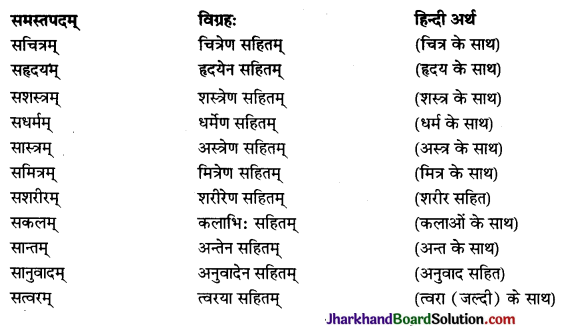
2. कर्मधारयसमासः
यदा तत्पुरुषसमासस्य द्वयोः पदयोः एकविभक्तिः अर्थात् समानविभक्तिः भवति तदा सः समानाधिकरणः तत्पुरुषसमासः कथ्यते। अयमेव समासः कर्मधारयः इति नाम्ना ज्ञायते। अस्मिन् समासे साधारणतया पूर्वपदं विशेषणम् उत्तरपदञ्च विशेष्यं भवति। यथा- नीलम् कमलम् = नीलकमलम्।।
1. अस्मिन् उदाहरणे नीलम् कमलम् इति द्वयोः पदयोः समानविभक्तिः अर्थात् प्रथमा विभक्तिः अस्ति। 2. अत्र नीलम् इति पदं विशेषणम् कमलम् इति पदञ्च विशेष्यम्। अत एव अयं कर्मधारयः समासः अस्ति।
(कर्मधारय समास – जब तत्पुरुष समास के दोनों में एक विभक्ति अर्थात् समान विभक्ति होती है तब वह समानाधिकरण तत्पुरुष समास कहा जाता है। यही समास ‘कर्मधारय’ इस नाम से जाना जाता है। इस समास में साधारणतया पूर्व पद विशेषण और उत्तरपद विशेष्य होता है जैसे-नीलम् कमलम् नीलकमलम्।।
![]()
1. इस उदाहरण में “नीलम् कमलम्” इन दो पदों में समान विभक्ति है। अर्थात् प्रथमा विभक्ति है।
2. यहाँ ‘नीलम्’ यह पद विशेषण और ‘कमलम्’ यह पद विशेष्य है। इसलिए यह कर्मधारय समास है।) इसके उदाहरण निम्नलिखित हैं –
1. विशेषण – विशेष्य कर्मधारयः –

2. उपमानोपमेय कर्मधारयः –

3. उपमानोत्तरपद कर्मधारयः –

4. अवधारणपूर्वपद कर्मधारयः –
विशेषणं विशेष्येण समस्यते। अत्र अवधारणार्थं द्योतयितुं विग्रहवाक्ये विशेषणात् परम् ‘एव’ शब्दः प्रयुज्यते।
यथा –

अन्यानि उदाहराणि

![]()
3. द्विगु समासः –
1. ‘संख्यापूर्वो द्विगुः’ इति पाणिनीयसूत्रानुसारं यदा कर्मधारयसमासस्य पूर्वपदं संख्यावाची उत्तरपदञ्च संज्ञावाची भवति तदा सः ‘द्विगुसमासः’ कथ्यते।
2. अयं समासः प्रायः समूहार्थे भवति।
3. समस्तपदं सामान्यतया नपुंसकलिङ्गस्य एकवचने अथवा स्त्रीलिङ्गस्य एकवचने भवति।
4. अस्य विग्रहे षष्ठीविभक्तेः प्रयोगः क्रियते। यथा –
द्विगु समास – 1. “संख्यापूर्वो द्विगुः” इस पाणिनीय सूत्रानुसार जब कर्मधारय समास का पूर्वपद संख्यावाची और उत्तरपद संज्ञावाची होता है तब वह द्विगु समास कहा जाता है।
2. यह समास प्रायः समूह के अर्थ में होता है।
3. समस्त पद सामान्यतया नपुंसकलिङ्ग के एकवचन में अथवा स्त्रीलिङ्ग के एकवचन में होता है। 4. इसके विग्रह में षष्ठी विभक्ति का प्रयोग किया जाता है। जैसे –

कुत्रचित् द्विगुसमासः स्त्रीलिङ्गे अपि भवति यथा- (कहीं द्विगु समास स्त्रीलिंग भी होते हैं। जैसे-)

4. बहुव्रीहिसमासः
समासे यदा अन्यपदार्थस्य प्रधानता भवति तदा सः बहुव्रीहिसमासः कथ्यते। अर्थात् अस्मिन् समासे न तु पूर्वपदार्थस्य प्रधानता भवति न हि उत्तरपदार्थस्य प्रत्युतः द्वौ अपि पदार्थो मिलित्वा अन्यपदार्थस्य बोधं कारयतः। समस्तपदस्य प्रयोगः अन्यपदार्थस्य विशेषणरूपेण भवति। यथा – ‘पीतम्’ ‘अम्बर’ यस्य सः= पीताम्बरः (विष्णुः)।
अत्र पीतम् तथा च अम्बरम् इत्यनयोः पदयोः अर्थस्य प्रधानता नास्ति अर्थात् ‘पीला वस्त्र’ इत्यर्थस्य ग्रहणं न भवति प्रत्युत उभौ पदार्थों तु मिलित्वा अन्यपदार्थस्य अर्थात् ‘विष्णुः’ इत्यस्य बोधं कारयतः अर्थात् पीताम्बरः इति समस्तपदस्यार्थः “विष्णुः’ अस्ति अत एव अत्र बहुव्रीहिसमासः अस्ति।
अस्य अन्यानि उदाहरणानि अधोलिखितानि सन्ति। यथा –
(बहुव्रीहिसमास – समास. में जब अन्य पदार्थ की प्रधानता होती है तब वह बहुव्रीहि समास कहा जाता है। अर्थात् इस समास में न तो पूर्व पदार्थ की प्रधानता होती है न ही उत्तर पदार्थ की बल्कि दोनों ही पदार्थ मिलकर अन्य पदार्थ का बोध कराते हैं। समस्त पद का प्रयोग अन्य पदार्थ के विशेषण रूप से होता है। जैसे- ‘पीतम्’ ‘अम्बर’ यस्य सः = पीताम्बरः (विष्णुः)।
![]()
यहाँ पर ‘पीतम्’ और वैसे ही ‘अम्बर’ इन पदों के अर्थ की प्रधानता नहीं है अर्थात् ‘पीला वस्त्र’ इस अर्थ का ग्रहण नहीं होता है अपितु दोनों पदार्थ मिलकर अन्य पदार्थ का अर्थात् ‘विष्णुः’ इसका बोध कराते हैं अर्थात् ‘पीताम्बरः’ इस समस्तपद का अर्थ ‘विष्णुः’ है अतः यहाँ बहुव्रीहि समास है।
इसके अन्य उदाहरण निम्नलिखित हैं। जैसे-)
समानाधिकरण-बहुव्रीहिः- यदा समासस्य पूर्वोत्तरपदयोः समानविभक्तिः (प्रथमा विभक्तिः) भवति तदा सः समानाधिकरणबहुव्रीहिः भवति। यथा- (जब समास के पूर्व पद और उत्तरपद में समान विभक्ति (प्रथमा विभक्ति) होती है तब वह समानाधिकरण बहुव्रीहि होता है। जैसे-)

व्यधिकरण-बहुव्रीहिः – यदा समासस्य पूर्वोत्तरपदयोः भिन्न-विभक्तिः भवति तदा सः व्यधिकरणबहुव्रीहिः भवति। यथा-(जब समास के पूर्व पद और उत्तर पद में अलग-अलग विभक्ति होती है तब वह ‘व्यधिकरण बहुव्रीहि’ समास होता है। जैसे-)

तुल्ययोगे बहुव्रीहिः – अत्र सह शब्दस्य तृतीयान्तपदेन सह समासो भवति। यथा –
(तुल्ययोगे बहुव्रीहि- यहाँ ‘सह’ शब्द का तृतीया विभक्ति पद के साथ समास होता है। जैसे-)
1. पुत्रेण सहितः (पुत्र के सहित) = संपुत्रः
2. बान्धवैः सहितः (बन्धुओं के सहित) = सबान्धवः
3. विनयेन सह विद्यानम् (विनय के साथ विद्या को) = सविनयम्
4. आदरेण सह विद्यमानम् (आदर के साथ विद्यमान) = सादरम्
5. पत्या सह वर्तमानः (पत्नी के साथ वर्तमान) = सपत्नीक (वसिष्ठः)
![]()
उपमानवाचकबहुव्रीहिः
1. चन्द्रः इव मुखं यस्या सा (चन्द्रमा के समान मुख है जिसका वह (स्त्री)) = चन्द्रमुखी
2. पाषाणवत् हृदयं यस्य सः (पाषाण के समान है हृदय जिसका वह) = पाषाणहृदयः
5. द्वन्द्वसमासः
द्वन्द्वसमासे परस्परं साकांक्षयोः पदयोः मध्ये ‘च’ आगच्छति, अतएव द्वन्द्वसमासः उभयपदार्थप्रधानः भवति। यथा-धर्म: च अर्थ: च-धर्मार्थो। अत्र पूर्वपदं ‘धर्मः’ उत्तरपदम् च ‘अर्थः’, अनयोः द्वयोः अपि प्रधानता अस्ति। द्वन्द्वसमासे समस्तपदं प्रायशः द्विवचने बहुवचने वा भवति। यथा –
(द्वन्द्व समासः – द्वन्द्व समास में परस्पर साभिप्राय पदों के मध्य के ‘च’ आता है; इसलिए द्वन्द्व समास उभयपदार्थ प्रधान होता है। जैसे – “धर्मः च अर्थ: च – धर्मार्थो। यहाँ पूर्व पद ‘धर्म’ और उत्तरपद ‘अर्थ:’ इन दोनों (पदों) की ही प्रधानता है। द्वन्द्व समास में समस्तपद प्रायः द्विवचन अथवा बहुवचन में होता है। जैसे-)

समाहार (समूहः) इत्यस्य अर्थे द्वन्द्वसमासस्य प्रायेण नपुंसकलिङ्ग एकवचनें प्रयोगः भवति। यथा (समाहार (समूह) के अर्थ में द्वन्द्व समास का प्रायः नपुंसकलिङ्ग में प्रयोग होता है। जैसे-)

अन्यानि उदाहरणानि
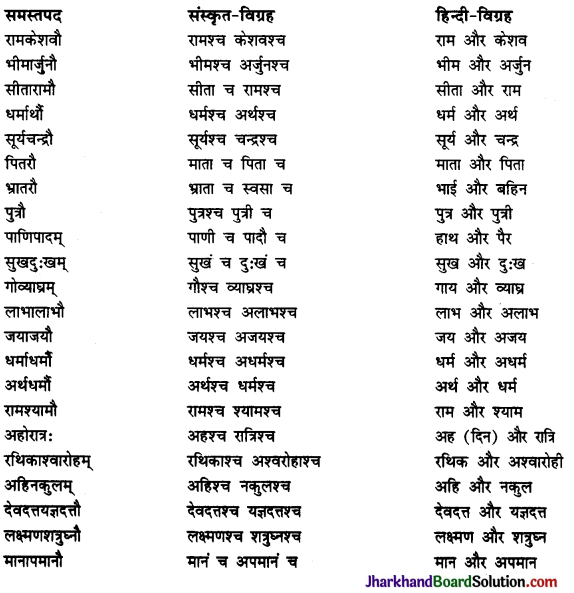
अभ्यासः
प्रश्न 1.
अधोलिखित प्रश्नानाम् उचित विकल्पं चित्वा लिखत –
1. अव्ययीभावसमासस्य उदाहरणम् अस्ति –
(अ) पीताम्बरः
(ब) नीलकमलम्
(स) यथाशक्ति
(द) त्रिलोकी
उत्तरम् :
(स) यथाशक्ति
![]()
2. अव्ययीभाव-समासस्य उदाहरणम् अस्ति –
(अ) महापुरुषः
(ब) चतुर्युगम्
(स) उपकृष्णम्
(द) प्राप्तोदकः
उत्तरम् :
(स) उपकृष्णम्
3. कर्मधारयसमासस्य उदाहरणम् अस्ति –
(अ) पीताम्बरम्
(ब) पीताम्बरः
(स) निर्मक्षिकम्
(द) पञ्चपात्रम्
उत्तरम् :
(अ) पीताम्बरम्
4. द्वन्द्वसमासस्य उदाहरणम् अस्ति –
(अ) दशाननः
(ब) दशपात्रम्
(स) वाक्त्वचम्
(द) महापुरुषः
उत्तरम् :
(स) वाक्त्वचम्
5. ‘सोद्वेगम्’ इति पदस्य विग्रहः स्यात् –
(अ) उद्वेगेन सहितम्
(ब) उद्वेगात् सहितम्
(स) उद्वेगस्य सहित
(द) उद्वेगेन सविधम्
उत्तरम् :
(अ) उद्वेगेन सहितम्
6. ‘दुभिक्षम्’ इति पदस्य विग्रहः अस्ति –
(अ) कष्टेन भिक्षा
(ब) भिक्षायाः अभावः
(स) भिक्षायाः व्यर्द्धिः
(द) न भिक्षा
उत्तरम् :
(ब) भिक्षायाः अभावः
![]()
7. ‘सचेष्टम्’ इति पदस्य विग्रहोऽस्ति –
(अ) सद् चेष्टा
(ब) चेष्टया सहितम्
(स) चेष्टायाः समृद्धि
(द) चेष्टोपेतः
उत्तरम् :
(ब) चेष्टया सहितम्
8. ‘प्रत्यक्षम्’ इति पदस्य विग्रहोऽस्ति –
(अ) अक्षम् प्रति
(ब) अक्षम् अक्षम्
(स) अक्षस्य प्रति
(द) अक्षस्य सम्मुखे
उत्तरम् :
(अ) अक्षम् प्रति
9. ‘सहर्षम्’ इति पदस्य विग्रहोऽस्ति –
(अ) हर्षेण सहितम्
(ब) हर्षेण युगपतु
(स) हर्षम् सह
(द) हर्षस्य सहितम्।
उत्तरम् :
(अ) हर्षेण सहितम्
10. ‘रसेन सहितम्’ इति समासविग्रहस्य समस्तपद अस्ति –
(अ) सरसम्
(ब) सहरसम्
(स) सरोसम्
(द) सरस
उत्तरम् :
(अ) सरसम्
![]()
11. ‘रथस्य समीपम्’ इति समासविग्रहस्य समस्तपद अस्ति –
(अ) सरथम्
(ब) उपरथम्
(स) रथरयम्
(द) रथोपरि
उत्तरम् :
(ब) उपरथम्
12. “त्रिंशतस्य समीपम्’ इति समासविग्रहस्य समस्तपद अस्ति –
(अ) उपत्रिंशतम्
(ब) सत्रिंशतम्
(स) त्रिंशतम्
(द) अनुत्रिंशतम्
उत्तरम् :
(अ) उपत्रिंशतम्
13. ‘भरणस्य व्यद्धिः’ इति समासविग्रहस्य समस्तपद अस्ति –
(अ) दुर्भरम्
(ब) निर्भरम्
(स) आत्मनिर्भरम्
(द) समनिर्भरम्
उत्तरम् :
(अ) दुर्भरम्
![]()
14. ‘दिनं दिनम्’ इति समासविग्रहस्य समस्तपद अस्ति –
(अ) अनुदिनम्
(ब) सुदिनम्
(स) प्रतिदिनम्
(द) दिनंदिनम्
उत्तरम् :
(अ) अनुदिनम्
प्रश्न 2.
प्रदत्तेषु उत्तरेषु यद् उत्तरं शुद्धम् अस्ति, तत् चीयताम् (दिये गये उत्तरों में से जो उत्तर शुद्ध है, उसे चुनिए)।
1. (i) यथासमयं कार्यं कुरु। (समय पर कार्य करो)
(अ) समयेन अनतिक्रम्य
(ब) समयः अनतिक्रम्य
(स) समयम् अनतिक्रम्य
उत्तरम् :
(स) समयम् अनतिक्रम्य।
(ii) सीतारामौ वनम् अगच्छताम्। (सीता और राम वन को गए।)
(अ) सीता च रामः च
(ब) सीते च रामौ च
(स) सीता च रामश्च च
उत्तरम् :
(अ) सीता च रामः च।
(iii) मुनयः कन्दं च मूलं च फलं च खादन्ति। (मुनि कन्द, मूल और फल खाते हैं।)
(अ) कन्दमूलफलानि
(ब) कन्दमूलफलाः
(स) कन्दमूलफलः
उत्तरम् :
(अ) कन्दमूलफलानि।
(iv) स चन्द्रमुखी अस्ति। (वह चन्द्रमुखी है।)
(अ) चन्द्र इव मुखं यस्य सः
(ब) चन्द्र इव मुखं यस्याः सा
(स) चन्द्र इव मुखम्
उत्तरम् :
(ब) चन्द्र इव मुखं यस्याः सा।
![]()
2. (i) अतिथे: पाणिपादम् प्रक्षालयति। (अतिथि के हाथ-पैर धोता है।)
(अ) पाणि च पादः च
(ब) पाणिम् च पादम् च
(स) पाणी च पादौ च
उत्तरम् :
(अ) पाणी च पादौ च।
(ii) स प्रतिवर्षम् गङ्गास्नानाय गच्छति। (वह प्रतिवर्ष गंगा-स्नान के लिए जाता है।)
(अ) वर्ष-वर्षम्
(ब) वर्ष:-वर्षः
(स) वर्षे-वर्षे
उत्तरम् :
(अ) वर्ष-वर्षम्।
(ii) सर्वदा असि त्वम्। (सब कुछ देने वाली हो तुम।)
(अ) सर्वं ददाति इति
(ब) सर्व ददाति या सा
(स) सर्वं ददति या सा
उत्तरम् :
(स) सर्वं ददाति या सा।
(iv) उपग्रामं विद्यालयः स्थितः। (गाँव के पास विद्यालय स्थित है।)
(अ) ग्रामस्य समीपम्
(ब) ग्रामं प्रति
(स) ग्रामस्य पश्चात्।
उत्तरम् :
(अ) ग्रामस्य समीपम्।
3. (i) मधुरदुग्धं कस्मै न रोचते ? (मीठा दूध किसको अच्छा नहीं लगता?)
(अ) मधुरं दुग्धं यस्मिन तत्
(ब) मधुरं दुग्धम्
(स) मधुरः दुग्धः
उत्तरम् :
(ब) मधुरं दुग्धम्।
![]()
(ii) पितरौ पुत्रस्य उन्नतिं दृष्ट्वा प्रसीदतः। (माता-पिता पुत्र की उन्नति को देखकर प्रसन्न होते हैं।)
(अ) माता च पिता च
(ब) मातरौ च पितरौ च
(स) मातृ च पितृ च
उत्तरम् :
(अ) माता च पिता च।
(iii) पीतम् अम्बरं धारयति। (पीला वस्त्र धारण करता है।)
(अ) पीतम्बरम्
(ब) पीतमाम्बरम्
(स) पीताम्बरम्।
उत्तरम् :
(स) पीताम्बरम्।
(iv) तत्रैका रम्या वाटिका विद्यते। (वहाँ एक रम्य वाटिका है।)
(अ) रम्यावाटिका
(ब) रम्यवाटिका
(स) रम्यं वाटिका
उत्तरम् :
(ब) रम्यवाटिका।
![]()
प्रश्न 3.
प्रकोष्ठात् उचितं विकल्पं चित्वा रिक्त स्थानं पूरयत –
1. सैनिका नृपस्य रथस्य पश्चात् ………………….. धावति। (अनुरथम्/प्रतिरथम्)
2. सः नगरस्य समीपे …………………… निवसति। (सनगरम्/उपनगरम्)
3. बालकाय सचित्रम् ……. पुस्तकं रोचते। (चित्रेण सहितम्/चित्रस्य सहितम्)
4. पुण्यः क्षणं क्षणं ……. क्षयति। (प्रतिक्षणम्/अनुक्षणम्)
5. योग्यताम् अनतिक्रम्य …………. कार्यं दीयताम्। (अनुयोग्यताम्/यथायोग्यम्)
उत्तरम् :
1. अनुरथम्
2. उपनगरम्
3. चित्रेण सहितम्
4. प्रतिक्षणम्
5. यथायोग्यम्।
प्रश्न 4.
निम्नलिखितपदानां समासविग्रहः कर्तव्यः –
1. घनश्यामः – ………………
2. प्रतिदिनम् – …………………
3. छत्रोपानहम् – ………………….
4. विद्याधनम् – …………………..
5. अधिहरि –
उत्तरम् :
1. घन इव श्यामः
2. दिनं दिनं प्रति
3. छत्रं च उपाहनम् च
4. विद्या एव धनम्
5. हरौ इति
![]()
प्रश्न 5.
निम्नलिखितपदानां समासविग्रहं कृत्वा समासस्य नामापि लेखनीयम् –
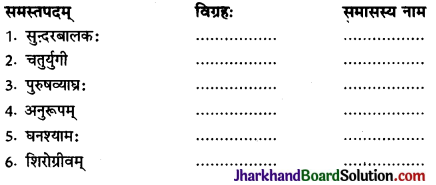
उत्तरम् :
1. सुन्दरः बालकः इति (कर्मधारयसमासः)
2. चतुर्णा युगानां समाहारः सा (द्विगुसमासः)
3. पुरुषः व्याघ्रः इव (कर्मधारयसमासः)
4. रूपस्य योग्यम् (अव्ययीभावसमासः)
5. घन इव श्यामः इति (कर्मधारयसमास:)
6. शिरः च ग्रीवा च (द्वन्द्वसमासः)
प्रश्न 6.
निम्नलिखित विग्रह वाक्यानां समासः करणीय –
1. श्वेतं वस्त्रम्
2. मुखं कमलम् इव
3. रूपस्य योग्यम्
4. उन्नतः वृक्षः
उत्तरम् :
1. श्वेतवस्त्रम्
2. कमलमुखम्
3. अनुरूपम्
4. उन्नतवृक्षः
![]()
प्रश्न 7.
‘क’- खण्ड ‘ख’- खण्डेन सह योजयत।
क खण्डः – ख खण्डः
1. अव्ययीभावसमासः – उपवनम्
2. द्वन्द्वसमासः – कुसुमकोमलम्
3. कर्मधारयसमासः – हरिहरौ।
उत्तरम् :
क खण्ड – ख खण्ड
1. अव्ययीभावसमासः – उपवनम्
2. द्वन्द्वसमासः – हरिहरौ
3. कर्मधारयसमासः – कुसुमकोमलम्
प्रश्न 8.
अधोलिखित वाक्येषु रेखांकित समस्तपदानां विग्रहं अथवा विग्रह पदानां समासं कृत्वा समासस्य नामपि लिखत –
(i) नीलकमलं विना सर: न शोभते।
(ii) सः प्रतिदिनं देवालयं गच्छति।
(ii) पत्रं च पुष्पं च समर्पयामि।
उत्तरम् :
(i) नील कमलं – नीलं च तत् कमलम् (नीला है जो कमल) (कर्मधारय)
(ii) प्रतिदिनं – दिनं दिनम (दिन-दिन) (अव्ययीभाव)
(iii) पत्रं च पुष्पं च – पत्रपुष्पौ (पत्र-पुष्प) (द्वन्द्व)।
प्रश्न 9.
अधोलिखित वाक्येषु रेखांकित समस्तपदानां विग्रहं अथवा विग्रह पदानां समासं कृत्वा समासस्य नामपि लिखत –
(i) श्रमिकः यथाशक्ति कार्य करोति।
(ii) उद्याने कृष्णसर्प निवसति।
(iii) अत्र शिवः केशवश्च स्तः।
उत्तरम् :
(i) यथाशक्ति – शक्तिम् अनतिक्रम्य (शक्ति के अनुसार) (अव्ययीभाव)
(ii) कृष्णसर्पः – कृष्णः च असौ सर्पः (काला है जो सर्प) (कर्मधारय)
(iii) शिवः केशवश्च – शिवकेशवौ (शिव और केशव) (द्वन्द्व समास)।
प्रश्न 10.
अधोलिखित वाक्येषु रेखांकित समस्तपदानां विग्रहं अथवा विग्रह पदानां समासं कृत्वा समासस्य नामपि लिखत –
(i) मम पुत्रस्य नाम घनश्यामः अस्ति।
(ii) अहं पार्वती च परमेश्वरं वन्दे।
(iii) इदं स्थानं निर्जलम् अस्ति।।
उत्तरम् :
(i) घनश्यामः – घन इव श्यामः (बादल के समान काला) (कर्मधारय)
(ii). पार्वती च परमेश्वरं च – पार्वतीपरमेश्वरौ (पार्वती और शिव) (द्वन्द्व समास)
(iii) निर्जलम् – जलस्य अभाव: (जल का अभाव) (अव्ययीभाव समास)।
![]()
प्रश्न 11.
अधोलिखितवाक्येषु स्थूलांकित समस्त पदानां विग्रहम् अथवा विग्रहपदानां समासं कृत्वा समासस्य नामापि लिखत।
1. (i) महानगरमध्ये चलदनिशं कालायसचक्रम्। (महानगर के मध्य दिनरात लौहचक्र चलता है।)
उत्तरम :
महत् च तत् नगरम् (महान् नगर)। कर्मधारय
(ii) दुर्दान्तैर्दशनैरमुना स्थान्नैव जनग्रसनम्। (विकरालै दाँतों द्वारा इससे लोगों का ग्रास न हो।)
उत्तरम् :
दुर्दान्तदशनैः (विकराल दाँत)। कर्मधारय
(iii) कज्जलमलिनं धूमं मुञ्चति। (काजल के समान मैली धुआँ छोड़ती है।)
उत्तरम् :
कज्जलम् इव मलिनम् (काजल की तरह मैली)। कर्मधारय
2. (i) यानानां हि अनन्ताः पंक्तयः। (यानों की अनन्त पंक्तियाँ हैं।)
उत्तरम् :
अनन्तपङ्क्तयः (अनन्त पंक्तियाँ) कर्मधारय
(ii) कुत्सितवस्तु मिश्रितं भक्ष्यम् (भोजन खराब वस्तु-मिश्रित है।)
उत्तरम् :
कुवस्तु (बुरी वस्तु)। कर्मधारय
(iii) समलंधरातलम् (मैला धरातल)।
उत्तरम् :
मलेन सहितम् (मैल सहित)। अव्ययीभाव
3. (i) न हि निर्मलं जलम् (शुद्ध जल नहीं है।)
उत्तरम् :
निर्मलजलम् (शुद्ध जल)। कर्मधारय
![]()
(ii) एकान्ते कान्तारे क्षणमपि मे स्यात् सञ्चरणम। (एकान पन में क्षणभर मेरा चलना हो।)
उत्तरम् :
एकान्तकान्तारे (एकान्त वन में)। कर्मधारय
(iii) हरिततरूणां ललितलतानां माला रमणीया। (हरे वृक्षों और सुन्दर लताओं की माला रमणीय है।)
उत्तरम् :
हरितः च असौ तरुः तेषां च। कर्मधारय
4. (i) नवमालिका रसालं मिलिता (नई माल्लिका आम से मिली।)
उत्तरम् :
नवा मालिका (नई माला)। कर्मधारय
(ii) जीवनमरणं नो कामये। (जीना मरना नहीं चाहता)
उत्तरम् :
जीवनम् च मरणम् च। द्वन्द्व
(iii) ततस्तया वृद्धदासी साभिप्रायमवलोकिता। (तब उसने बुढ़िया दासी को सप्रयोजन देखा।)
उत्तरम् :
वृद्धा दासी (बूढ़ी नौकरानी)। कर्मधारय
5. (i) कृष्णाङ्गारान अपि तदर्थिभ्यः प्रेषितवती।
(कोयलों को भी उनके चाहने वालों को भेज दिया।)
उत्तरम् :
कृष्णान् अङ्गाराम् (काले अंगारे)। कर्मधारय
(ii) घृतेनसहितं भोजनं च तस्मै दत्तवती। (घी सहित भोजन उसे दिया।)
उत्तरम् :
सघृतम् (घृत सहित)। अव्ययीभाव
(iii) सव्यवधानं न चारित्रलोपाय।
(रुकावट सहित चरित्र को लोप नहीं करता।)
उत्तरम् :
व्यवधानेन सहितम् (रुकावट सहित)। अव्ययीभाव
![]()
6. (i) सूर्यचन्द्रयोः को वा भवतोवरास्य कर्ता ?
(सूर्यचन्द्र में कौनसा आपके वंश का कर्ता है ?)
उत्तरम् :
सूर्यस्य च चन्द्रस्य च/सूर्यः च चन्द्रः च तयोः च। (सूर्य और चन्द्र) द्वन्द्वसमास
(ii) एवम् अधिक्षिपतिनिरनुक्रोशस्य पुत्रौ। (इस प्रकार से फटकारती है- ‘निर्दयी के पुत्रो !)
उत्तरम् :
पुत्रः च पुत्रः च। द्वन्द्व
(i) श्रमक्लम पिपासोष्ण – शीतादीनां सहिष्णुता।
(श्रम की थकावट, प्यास गर्मी शीत आदि की सहनशीलता)
उत्तरम् :
पिपासा च उष्णं च (प्यास और गर्मी) द्वन्द्व
7. (i) वयोरूपगुणैः हीनमपि कुर्यात्सुदर्शनम्।
(आयु रूप गुणों से हीन को भी सुन्दर बनाता है।)
उत्तरम् :
वयः च रूपं च गुणः च तैः च (आयु और रूप और गुणों से) द्वन्द्व
(ii) स च शीते वसन्ते च तेषां पथ्यतमः स्मृतः। द्वन्द्व
(और वह शीत और वसन्त में उनका सबसे अधिक हितकर कहलाता है।)
उत्तरम् :
शीतिवसन्तयोः (सर्दी और वसन्त में) द्वन्द्व
(iii) सर्वेष्वृतुष्वहरहः (सभी ऋतुओं में दिन पर दिन)
उत्तरम् :
अहन् च अहन च। (दिन और दिन) द्वन्द्व
8. (i) सर्वेष्वृतुष्वहरहः (सभी ऋतुओं में)
उत्तरम् :
सर्वऋतुषु। सर्वर्तुषु। (सभी ऋतुओं में) कर्मधारय
(ii) वयोवलशरीराणि देशकालाशनानि च। (आयु-बल-शरीर-देश-काल और भोजन)
उत्तरम् :
देशः च काल: च अशनम् च। (देश और समय और भोजन) द्वन्द्व
![]()
(iii) मार्गे गहनकानने सा एकं व्याघ्रं ददर्श। (मार्ग में गहन वन में उसने एक बाघ देखा।)
उत्तरम् :
गहने कानने (गहन वन में) कर्मधारय
9. (i) निजगले बदध्वा चल सत्वरम। (अपने गले में बाँधकर शीघ्र चल)
उत्तरम् :
त्वरेण सहितम् (जल्दी के साथ) अव्ययीभाव
(ii) शृगालेन सहितं पुनरायान्तं ….. (सियार सहित फिर आते हुए को….)
उत्तरम् :
सशृगालम् (सियार सहित) अव्ययीभाव
(ii) बुद्धिर्बलवती तन्वि सर्वकार्येषु सर्वदा। (हे तन्वि ! सभी कार्यों में सदैव बुद्धि बलवती होती है।)
उत्तरम् :
सर्वेषु कार्येषु (सभी कार्यों में) कर्मधारय
10. (i) हयाश्च नागाश्च वहन्ति बोधिता। (घोड़े और हाथी बताने पर वहन करते हैं।)
उत्तरम् :
हयनागाः (घोड़े और हाथी) द्वन्द्व
(ii) अनुक्तमप्यूहति पंडितोजनः। (विद्वान् बिना कहे समझ लेते हैं।)
उत्तरम् :
पण्डितजनः (विद्वान् लोग) कर्मधारय
(iii) यथास्थितः काष्ठगतो हि वह्निः। (जिस प्रकार से काठ में स्थित अग्नि।)
उत्तरम् :
स्थितिम् अनतिक्रम्य। (जिस प्रकार से स्थित) अव्ययीभाव
11. (i) सेवितव्यो महावृक्षः (महावृक्ष की सेवा करनी चाहिए।)
उत्तरम् :
महान् च असौ वृक्षः। (महान् है जो वृक्ष) कर्मधारय
![]()
(ii) सम्पत्तौ च विपत्तौ च महतामेकरूपता। (सुख और आपत्ति में महापुरुष समान होते हैं।)
उत्तरम् :
सम्पत्तिविपत्तिषु। (संपत्ति और विपत्ति में)। द्वन्द्व
(iii) धरायाः महत्कम्पनं जातम्। (धरती का महान् कम्पन हो गया।)
उत्तरम् :
महाकम्पनम् (अत्यधिक कम्पन) कर्मधारय
12. (i) बृहत्यः पाषाण शिलाः (बड़ी पत्थर की शिला)
उत्तरम् :
बृहत्पाषाणशिलाः। (बड़ी पत्थर की शिला)। कर्मधारय
(ii) राजानं यथेष्टमभ्यनन्दत् (राजा को इच्छानुसार अभिनन्दन किया।)
उत्तरम् :
इष्टम् अनतिक्रम्य (इच्छानुसार) अव्ययीभाव
(iii) तस्य तारस्वरेण प्रबुद्धाः ग्रामवासिनः। (उसके उच्च स्वर से ग्रामीण जाग गये।)
उत्तरम् :
तारेण स्वरेण (जोर की आवाज से) कर्मधारय
13. (i) हयाश्च नागाश्च वहन्ति बोधिताः (शिक्षित घोड़े और हाथी ढोते हैं।)
उत्तरम् :
हयनागाः (घोड़े और हाथियों) द्वन्द्व समास
14. (i) सः चक्रेण सह गच्छति। (वह चक्र के साथ जाता है।)
उत्तरम् :
सचक्रम् (चक्र के साथ) द्वन्द्व समास
![]()
प्रश्न 12.
स्थूलपदेषु समासम् अथवा विग्रहम् कृत्वा उत्तरपुस्तिकायाम् लिखत –
(स्थूलपदों में समास अथवा समास विग्रह करके उत्तर-पुस्तिका में लिखिए।)
1. (i) मधुरवचनम् एव वदेत्। (मधुर वचन ही बोलना चाहिए।)
उत्तरम् :
मधुरम् च तत्
वचनम्। (मधुर है जो वचन।)
(ii) महावीरः सदैव कीर्तिं लभते। (महावीर सदैव कीर्ति को प्राप्त करता है।)
उत्तरम् :
महान् च असौ वीरः। महान् वीरः (महान वीर।)
(ii) सूपकारः भोजनं पचति। (रसोइया भोजन पकाता है।)
उत्तरम् :
सूपं करोति इति। (सूप/दाल बनाता है।)
(iv) रामः मृगस्य पश्चात् धावति। (राम मृग के पीछे दौड़ता है।)
उत्तरम् :
अनुमृगम् (मृग के पीछे।)
![]()
2. (i) विद्यालयस्य वार्षिक: महोत्सवः अस्ति। (विद्यालय का वार्षिक महोत्सव है।)
उत्तरम् :
महान् उत्सवः (महान् च असौ उत्सवः च।)
(ii) यथेष्टं भोजनं कुरु। (इच्छित भोजन कर।)
उत्तरम् :
इष्टम् अनतिक्रम्य (इच्छा का अतिक्रमण न करके।)
(iii) सः उन्नतवृक्षम् आरोहति। (वह ऊँचे वृक्ष पर चढ़ता है।)
उत्तरम् :
उन्नतं वृक्षम् (ऊँचा पेड़।)
(iv) कृष्णमेघः वर्षति। (काला बादल बरसता है।)
उत्तरम् :
कृष्णम् मेघम् (काला मेघ।)।
3. (i) छात्रौ किं पठतः ? (दो छात्र क्या पढ़ते हैं ?)
उत्तरम् :
छात्रः च छात्रः च (छात्र और छात्र)।
(i) महापुरुषः येन गतः स पन्थः। (महापुरुष जिससे गया, वही उचित मार्ग है।)
उत्तरम् :
महान् पुरुषः (महान् च असौ पुरुषः।)।
![]()
(iii) राधा चतुरा बाला अस्ति। (राधा चतुर बालिका है।)
उत्तरम् :
चतुरबाला (चतुर नारी/बालिका)।
(iv) मधुरवचनं विना भाषणं व्यर्थम् एव अस्ति। (मधुरवचन के बिना भाषण बेकार ही है।)
उत्तरम् :
मधुरम् वचनम् (मीठे वचन)।
4. (i) सा विधिम् अनतिक्रम्य गणितं शिक्षते। (वह विधि का त्याग किए बिना गणित पढ़ाती है।)
उत्तरम् :
यथाविधि (विधि से)।
(i) काकः कृष्णः पिकः कृष्णः को भेदः पिककाकयोः ?
(कौआ काला कोयल काली, कोयलं और कौए में क्या भेद ?)
उत्तरम् :
पिकः च काकः च तयोः। (कोयल और कौआ उनमें)।
(iii) सरोवरे नीलानि कमलानि शोभन्ते। (सरोवर में नीले कमल शोभा देते हैं।)
उत्तरम् :
नील कमलानि। (नीले कमल।)
![]()
(iv) राजा अपि नीलोत्पलम् इव चक्षुः उत्पाट्य याचकाय समर्पितवान्।
(राजा ने भी नीलकमल की तरह नेत्र को उखाड़ कर याचक के लिए समर्पित कर दिया।)
उत्तरम् :
नीलम् उत्पलम् इव। (नीले कमल के समान)।
5. (i) सः अपि तत् नेत्रं यथास्थानम् अस्थापयत्।
(उसने भी उस नेत्र को यथास्थान स्थापित कर दिया।)
उत्तरम् :
स्थानम् अनतिक्रम्य। (उचित स्थान पर)।
(i) वृद्धान् उपसेवितुं शीलं यस्य सः राजा याचकाय द्वितीयमपि नेत्रं दत्तवान्।
(वृद्धों की सेवा करने का शील है, जिसका, उस राजा ने याचक के लिए दूसरा नेत्र भी दे दिया।)
उत्तरम् : वृद्धोपसेवी (वृद्धों की सेवा करने वाला)।
(iii) को भेदः पिकः च काकः च तयोः ? (कोयल और कौए में क्या भेद है ?)
उत्तरम् :
पिककाकयोः (कोयल और कौए में)।
(iv) प्रत्येकम् अयनस्य अवधिः षण्मासाः। (प्रत्येक अयन की अवधि छः माह होती है।)
उत्तरम् :
एकम् एकम् (हरेक)।
6. (i) अनेन वचसा प्रतिहतम् अन्तःकरणं यस्य सः अचिन्तयत्। (इस वचन से आहत हुए हृदय वाले उसने सोचा।)
उत्तरम् :
प्रतिहतान्त:करणः (आहत हृदय वाले ने)।
(ii) अनुद्वेगकरं वाक्यं सत्यं प्रियहितं च यत्।
(उद्विग्नता पैदा न करने वाले वाक्य सत्य, प्रिय और हितकर होते हैं।)
उत्तरम् :
प्रियम् हितम् च (प्रिय और हितकर)।
(iii) नीलोत्पलम् इव एकं चक्षुः समर्पितवान्। (नीलकमल की तरह एक नेत्र को सौंप दिया।)
उत्तरम् :
नीलम् उत्पलम्। (नीलकमल)।
![]()
(iv) सर्वं ददाति सर्वदाऽस्माकं सन्निधिं क्रियात्। (सब कुछ देती है जो सदा, वह हमारी सन्निधि)
उत्तरम् :
सर्वदा (सब देने वाली)
7. (i) माता च पिता च आगच्छतः। (माता और पिता आते हैं।)
उत्तरम् :
मातापितरौ/पितरौ (माता-पिता)।
(ii) सः पीतम् अम्बरम् धारयति। (वह पीला वस्त्र धारण करता है।)
उत्तरम् :
पीताम्बरम् (पीला वस्त्र)।
(i) नीलकमलम् विना सरः न शोभते। (नीलकमल के बिना सरोवर शोभा नहीं देता।)
उत्तरम् :
नीलम् कमलम् (नीला कमल)।
(iv) त्वं शक्तिम् अनतिक्रम्य परिश्रमं करोषि। (तुम शक्ति के अनुसार परिश्रम करते हो।)
उत्तरम् :
यथाशक्ति (शक्ति के अनुसार)।
8. (i) रामः च लक्ष्मणः च विश्वामित्रस्य शिष्यौ आस्ताम्। (राम और लक्ष्मण विश्वामित्र के शिष्य थे।)
उत्तरम् :
रामलक्ष्मणौ (राम-लक्ष्मण)।।
(ii) अयं संसार: मरणशीलः अस्ति। (यह संसार मरणशील है।)
उत्तरम् :
मरणं शीलं यस्य सः (मरने में ही जिसका शील है।)
(ii) सरोवरे नीलकमलानि शोभन्ते। (सरोवर में नीलकमल शोभा देते हैं।)
उत्तरम् :
नीलानि कमलानिः (नीले कमल)।
![]()
(iv) कथमत्र मते च उन्नते च विषमे मार्गे क्रीडथ?
(कैसे यहाँ नीचे और ऊँचे विषम मार्ग में खेल रहे हो?)
उत्तरम् :
नतोन्नते (नीचे-ऊँचे में)
9. (i) दुष्टा बुद्धिः यस्य सः सद्वचनानि तिरस्कृत्य प्राचलत्।
(दुष्ट है बुद्धि जिसकी वह अच्छे वचनों का तिरस्कार करके चल पड़ा।)
उत्तरम् :
दुष्टबुद्धिः (दुष्ट बुद्धि वाला)।
(ii) सर्वेषामेव महत्त्वं विद्यते यथासमयम्। (यथासमय सभी का महत्त्व है।)
उत्तरम् :
समयम् अनतिक्रम्य (समय के अनुसार)।
(ii) ततः युधिष्ठिरार्जुनौ श्रीकृष्णेन सह रथारोहणं नाटयतः।
(तब युधिष्ठिर और अर्जुन श्रीकृष्ण के साथ रथ पर चढ़ने का अभिनय करते हैं।)
उत्तरम् :
युधिष्ठिरः च अर्जुनः च। (युधिष्ठिर और अर्जुन)।
(iv) अये! कथं श्रीकृष्णार्जुनौ युधिष्ठिरश्च। (अरे! कैसे श्रीकृष्ण और अर्जुन और युधिष्ठिर।)
उत्तरम् :
श्रीकृष्णः च अर्जुनः च (श्रीकृष्ण और अर्जुन)।
10. (i) तौ पाणी च पादौ च प्रक्षालयतः। (वे दोनों हाथ और पैर धोते हैं।)
उत्तरम् :
पाणिपादम् (हाथ-पैर)।
(ii) सः प्रतिदिनं दानं करोति स्म। (वह प्रतिदिन दान करता था।)
उत्तरम् :
दिनं दिनम् प्रति (रोजाना)।
![]()
(iii) सः प्रजाभ्यः धनधान्यं दातुं दानशाला: अकारयत्।
(उसने प्रजाओं के लिए धन-धान्य देने के लिए दानशालाएँ बनवायीं।)
उत्तरम् :
धनं च धान्यं च (धन और अन्न)
(iv) ततः युधिष्ठिरार्जुनौ श्रीकृष्णेन सह रथारोहणं नाटयतः।
(तब युधिष्ठिर और अर्जुन श्रीकृष्ण के साथ रथारोहण का अभिनय करते हैं।)
उत्तरम् :
युधिष्ठिरः च अर्जुनः च (युधिष्ठिर और अर्जुन)
11. (i) किं चपलबालकेभ्यः भीषणानाम् अस्त्राणाम् प्रदानम् उचितम् ?
(क्या चपल बालकों को भीषण अस्त्रों का देना उचित है ?)
उत्तरम् :
भीषणास्त्राणाम् (भयंकर अस्त्रों का)।
(ii) सर्वेषामेव महत्त्वं विद्यते यथासमयम्। (समय के अनुसार सभी का महत्त्व होता है।)
उत्तरम् :
समयम् अनतिक्रम्य। (समय के अनुसार)।
(iii) नीलमुत्पलं यस्मिन् तत् सरः सुन्दरम्। (नीला कमल है जिसमें, वह तालाब सुन्दर है।)
उत्तरम् :
नीलोत्पलम् (नील कमल वाला)।
![]()
प्रश्न 13.
अधोलिखित प्रश्नानाम् उत्तराणि दत्तानि। एतेषु उत्तरेषु समासं समास-विग्रहं वा कृत्वा उत्तरपुस्तिकायां लिखत। (निम्नलिखित प्रश्नों के उत्तर दिए हुए हैं। इन उत्तरों में समास अथवा समास-विग्रह करके उत्तर पुस्तिका में लिखिए।)
1. (i) भगवन् ! किम् उपादेयम् ? (गुरुवचनम्)
(ii) को गुरुः ? (अधिगततत्त्वः)
(iii) अहः च निशा च कः ध्यातव्यः ? (ईश्वरः)
(iv) को पूज्यौ ? (मातापितरौ)
उत्तराणि :
(i) गुरोः वचनम्
(ii) अधिगतं तत्त्वं येन सः
(iii) अहर्निशम्
(iv) माता च पिता च।
![]()
2. (i) अत्र केषां वाटिका अस्ति ? (पुष्याणां वाटिका)
(ii) उद्याने मधुर कण्ठेन को कूजतः ? (पिकमयूरी)
(iii) वाटिकायां कीदृशानि पुष्पाणि सन्ति ? (पीतपुष्पाणि)
(iv) अत्र कः वसति ? (पुण्यात्मा)
उत्तराणि :
(i) पुष्पवाटिका
(ii) पिकः च मयूरः च
(iii) पीतानि पुष्पाणि
(iv) पुण्यः आत्मा यस्य सः।
